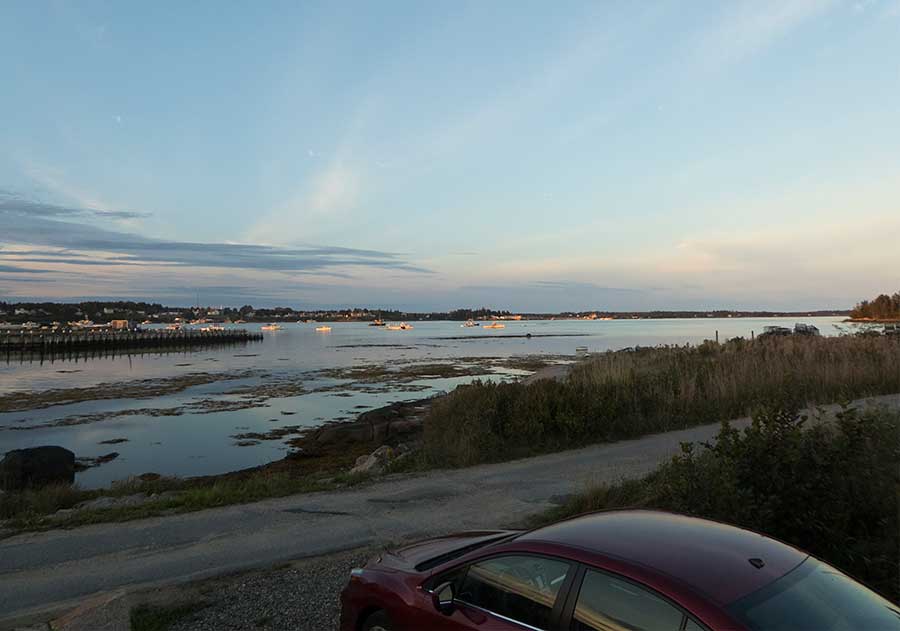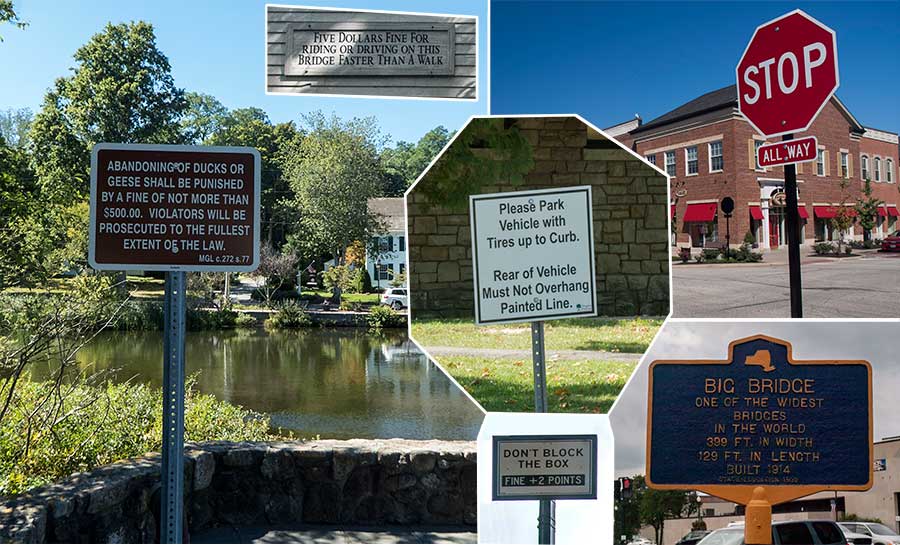Fall (autumn) in the USA - 1

Mystic of Holyhead (successor to Lynn Rival)
Rachel and Paul Chandler
Tue 1 Nov 2016 01:00
|
On the way to Maine we stopped briefly in
Portsmouth, New Hampshire. It's an old seaport, established in
1623, and now has a thriving historic centre - pleasant to walk
around for an hour or two. Portland is the biggest city in Maine so we stayed a couple of nights and spent a day exploring. First things first: we had to find the best local diner, the seductively named 'Miss Portland', a 1949 Worcester Lunch Car Company Diner:  A quiet mid morning at the 'Miss Portland' diner We enjoyed climbing up the Observatory, built in 1807 as a private maritime signalling station and now maintained by volunteers as a historic site. Though recently restored nearly all of the original timber structure is retained. It is not known, but is the subject of much speculation, exactly how the eight corner posts, which are single lengths, were erected. From the top you can look northeast and see why Maine is such a popular cruising destination.  Portland Observatory . . . . . . and the view towards the Atlantic Beyond Portland and all the way to the Canadian border the coastline of Maine is deeply indented with rugged peninsulas and offlying islands. We drove through coastal villages and over impressive bridges, including one which carries the US 1 highway over the Penobscot River, just south of the city of Bangor. This cable stayed bridge keeps Maine at the forefront of engineering by including a number of carbon fibre strands. Design and construction took only 42 months - UK infrastructure planners eat your hearts out!  The Penobscot Narrows Bridge, in which the builders thoughtfully incorporated an elevator to a public observatory. We went on via Mt Desert Island (pronounced "dessert" and not at all desert-like, but a bit of a tourist trap), to a stretch of coast called Downeast Maine. Here we crossed a bridge to a small island, home to the lobster fishing village of Beals.  Over the bridge to Beals (actually looking back at the mainland from Beals) We stayed in the only visitor accommodation on the island, next to the only eatery - a "Take-out" serving the best lobster rolls in Maine - for the last 3 days before closing (both) for winter. It rained a lot while we were there but we loved every minute. Nearby Great Wass island is now a nature reserve where you can walk for hours through the woods and along the rocky coast without seeing anyone else. Paul enjoyed the views right into the Bay of Fundy, which has a proper tidal range like his original home town of Newport. The small community in Beals thrives on exploiting the abundance of lobsters in the surrounding waters and is pleasantly unaffected by the pressures of urban life and demands of tourism.  Our lodgings at Beals, and a rare glimpse of our red Subaru, rented for the trip  Sunset at Beals  Bayview Takeout - in the same family as our host; as may have been much of the village's business! Back on the mainland we spotted a blue hemispherical building, Maine and USA flags flying proudly. Sure enough it was 'Wild Blueberry Land'. We popped in, but had missed the season by a few days, so we made do with a box of freshly frozen blueberries, and of course a blueberry recipe book! We were tempted to continue east to Nova Scotia but we would have been going further and further from our upcoming rendezvous with Lynda and we decided to return to New Hampshire, this time to visit the White Mountains. There are many scenic drives and hiking trails in the area but for us the highlight was a trip to the summit of Mt Washington on the Cog (rack and pinion) Railway. At $68 per person for a 3.5 mile journey it must be one of the most expensive railways in the world, but it's fun and saves a hard walk in potentially dangerous conditions. Mt Washington is famous for its treacherous weather. Despite its relatively low altitude (6,288 feet) it is said to have the worst weather in the Americas and holds the record for the strongest winds ever recorded by man (239 mph).  The steamer only makes one ascent per day, during which the fireman shovels a ton of coal into the boiler  Going up . . . into the cloud and rime! The railway opened in 1869, when the loco was wood burning  It's freezing at the top. A biodiesel loco, built on site, pushed us up After two nights near Mt Washington we drove west along the Kancamagus Highway, notable for its forested scenery and lack of development, and then south to Laconia, where we stayed the night in another lovely, rambling typical New England clapboard house.  A typical covered bridge, unfortunately named Blair Bridge, built in1870, is notable for prestressed timber trusses For the next two days we continued south-west, by-passing New York, towards Philadelphia.  As we left New Hampshire the
foliage was becoming autumnal - soon the area will be awash
with 'leaf peepers' As we left New Hampshire the
foliage was becoming autumnal - soon the area will be awash
with 'leaf peepers'While travelling around the States we'd become used to a lot of signage. On rural roads one is constantly being reminded of the speed limit, no passing (overtaking), bends and to "watch out" for this or that. Warnings of animals crossing - from turtles to moose - and useful historic information signs abound. At pullouts (lay-bys) there are often helpful signs giving information about the view, local flora and fauna, ecology, etc. but in other places the signs are incredibly bossy and rather hilarious, such as telling you to park your car exactly between the two lines and right up to the kerb.  You have been warned! In the USA words work better than symbols |